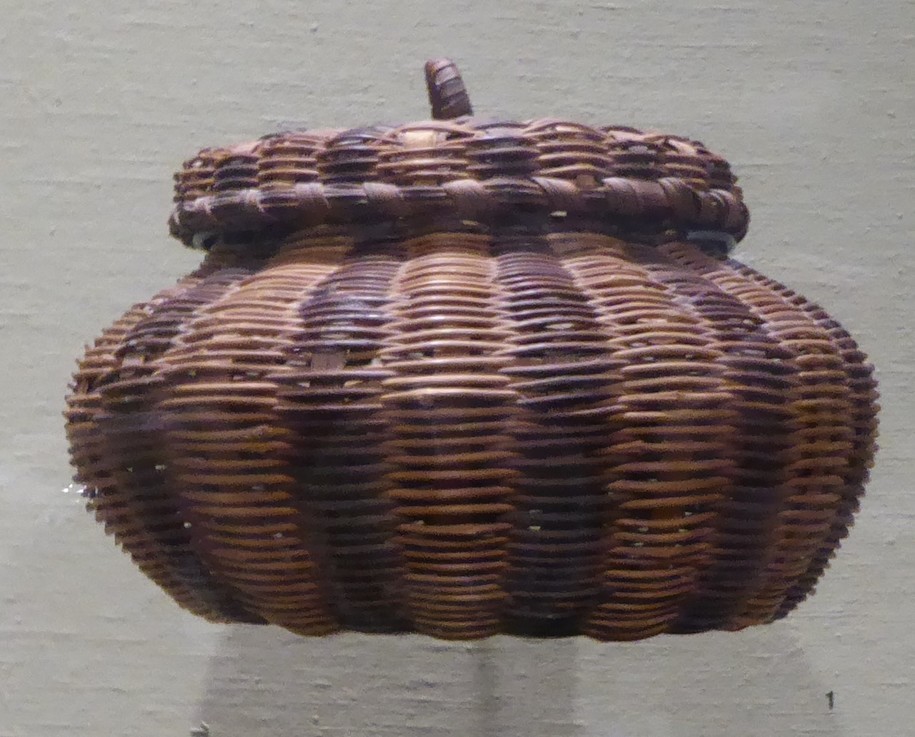
The Southeastern Woodlands is an area which is bounded by the Ozark-Ouachita Highlands of Arkansas and Missouri and the dry plains of eastern Texas on the west and the low plateaus of Kentucky and Tennessee and the interior plains of Illinois on the north. The eastern boundary is the Atlantic Ocean and southern boundary is the Gulf of Mexico. The Southeastern Culture Area includes the present states of Georgia, Florida, South Carolina, western North Carolina, Alabama, Mississippi, Louisiana, southern and eastern Arkansas, Tennessee, and the portions of Missouri, Illinois, and Kentucky that border the Mississippi River. Prior to European contact nearly two million Indian people lived in this area.
The cultures of the Southeastern Culture Area were often complex. The Indian peoples who lived in this area were skilled farmers who lived in permanent villages.
One of the crafts practiced by Indian people throughout North America is basket making. In his book American Indian Basketry, Otis Mason reports:
“There is practically no limit to the used to which basketwork weaving has been put.”
The Cherokee, Chitimacha, Caushatta, Atakapa, and Seminole are often seen as the primary Southeastern tribes that made baskets. The display on Southeastern Baskets at the Portland Art Museum states:
“These groups work with split river cane, sweetgrass and oak and ash splints. The material is split into lengths and the colored using commercial or vegetal dyes, such as walnut for black and brown and bloodroot for red and orange.”
Throughout the region, baskets were, and sometimes still are, made by plaiting swamp cane. In an essay in Dimensions of Native America: The Contact Zone, Diane Clark reports:
“The similarity of techniques and designs among these groups suggests that information and skills were widely traded.”
Traditionally, baskets were made by the women and this was an important economic contribution to the family.
Today, many museums and collectors view American Indian basketry as an art form. Writing in 1904 about Indian basketmakers, Otis Mason reports:
“Her patterns are in her soul, in her memory and imagination, in the mountains, watercourses, lakes, and forests, and in those tribal tales and myths which dominate the actions of every hour. She hears suggestions from another world.”
Shown below are some examples of Southeastern basketry on display in the Portland Art Museum.
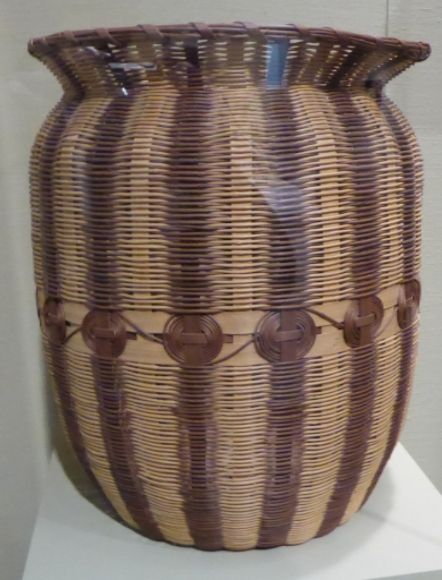 The Cherokee honeysuckle basket shown above was made about 1880. It is made from honeysuckle with oak splints.
The Cherokee honeysuckle basket shown above was made about 1880. It is made from honeysuckle with oak splints. 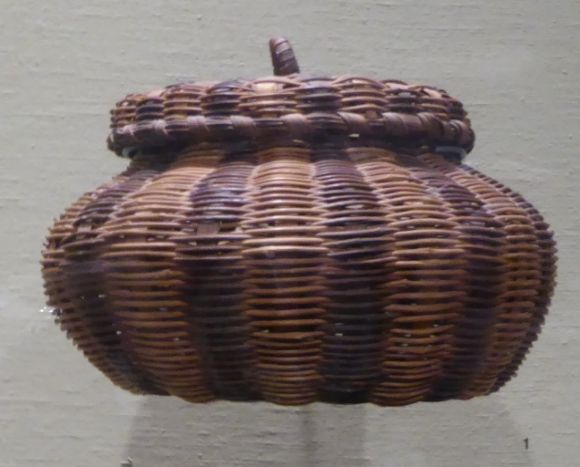 The Cherokee lidded honeysuckle basket shown above was made about 1890. It is made from honeysuckle with oak splints.
The Cherokee lidded honeysuckle basket shown above was made about 1890. It is made from honeysuckle with oak splints.  The Cherokee splint basket shown above was made about 1890. It is made from honeysuckle with oak splints.
The Cherokee splint basket shown above was made about 1890. It is made from honeysuckle with oak splints. 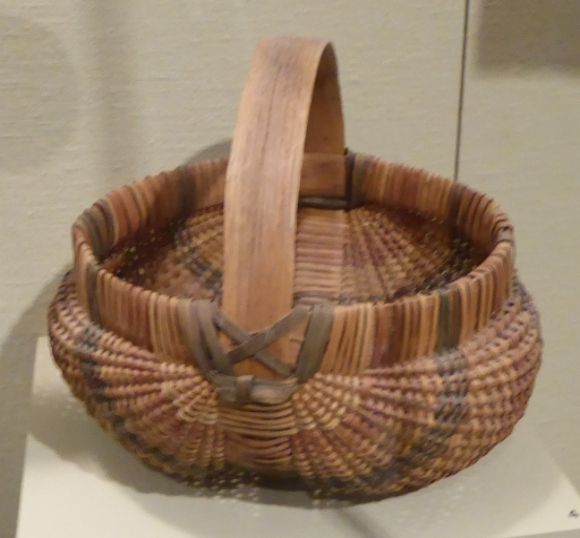 The Cherokee splint basket shown above was made about 1880. It is made from honeysuckle with oak splints and metal.
The Cherokee splint basket shown above was made about 1880. It is made from honeysuckle with oak splints and metal. 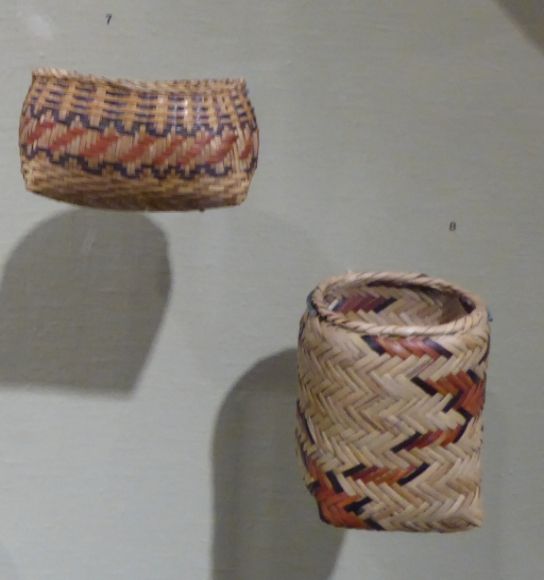 The top basket shown above is Atakapa made about 1880. The bottom basket was made in 1960 by Lorena Langley (Coushatta/Koasati).
The top basket shown above is Atakapa made about 1880. The bottom basket was made in 1960 by Lorena Langley (Coushatta/Koasati). 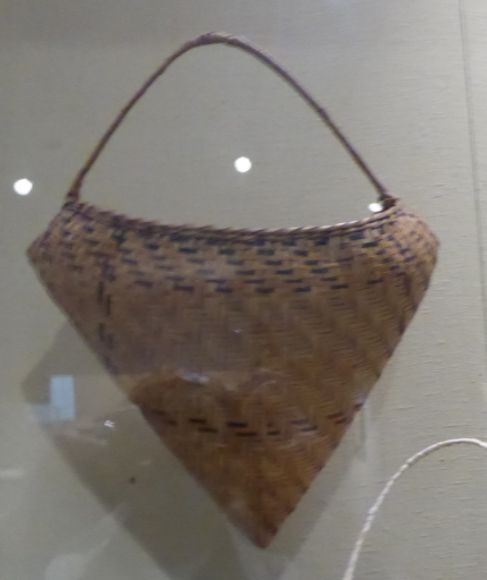 Shown above is an Atakapa basket made about 1860.
Shown above is an Atakapa basket made about 1860. 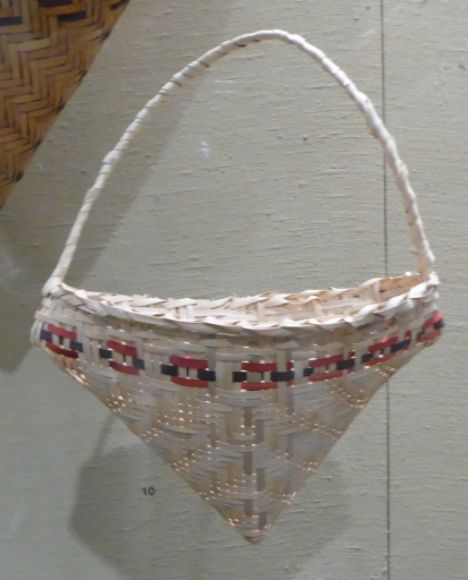 Shown above is a basket made by Nan MacDonald (Abenaki/Haudenosunee) in 2014.
Shown above is a basket made by Nan MacDonald (Abenaki/Haudenosunee) in 2014. 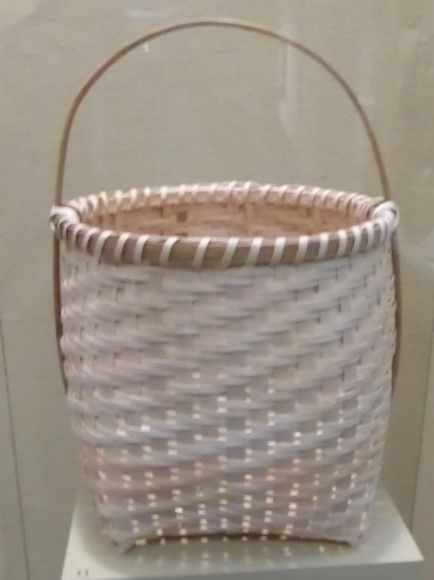 Shown above is a basket made by Nan MacDonald (Abenaki/Haudenosunee) in 2014.
Shown above is a basket made by Nan MacDonald (Abenaki/Haudenosunee) in 2014.
Nan MacDonald is an enrolled member of the Ontario Canada Metis. According to the display:
“She says it is important to honor the past by weaving into the future—knowledge and memories are living entities that must be passed on to the next generation.”

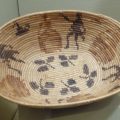
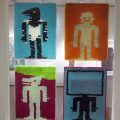
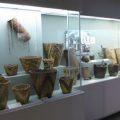
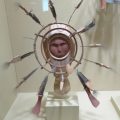
Leave a Reply